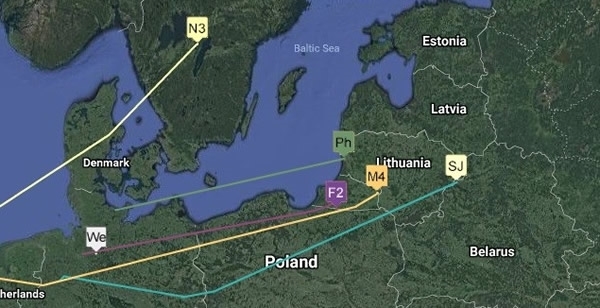
By Chris Heward, Wetlands Research Assistant
One of the key aims of the Woodcock Watch project is to understand when and how migrant woodcock move between their wintering grounds in the British Isles and their breeding sites elsewhere.
There is a clear practical benefit to gaining this information. To maintain a healthy wintering woodcock population, it is necessary to consider all aspects of their life cycle and think beyond our shores.
This doesn’t just include their wintering and breeding sites, but also their paths between the two; a point perfectly illustrated by the current Woodcock Watch map. At this time of year, many of our satellite-tagged woodcock are returning to breeding sites in Russia and Finland and this brings a large proportion through either Latvia, Lithuania, Estonia, Belarus or Kaliningrad.
Assuming our tagged birds are representative of the wider population, this could mean hundreds of thousands of British and Irish woodcock migrate through these states – and if we extend this to consider migrants from France, Spain and Italy too, the figure is probably in the millions.
It seems many of our birds not only pass through these areas but stop here too. Our tagged woodcock tend to migrate in bursts of flight– which average around 600 – 1,100 km – interspersed with breaks of up to a week.
Most migrants will make at least one such stop in this area. For a small number this is a final destination (particularly those in eastern Latvia and Belarus), but generally it is a temporary break before making the final push into western Russia.
This is an interesting finding from our satellite-tracking that could have direct conservation implications. The status of our migrant population depends upon the availability of suitable stop-over habitat in these areas as well as sensible hunting policies during migration periods. The conservation of migrant birds such as woodcock is the responsibility of all nations on their flyway.
Please contribute to our vital woodcock research